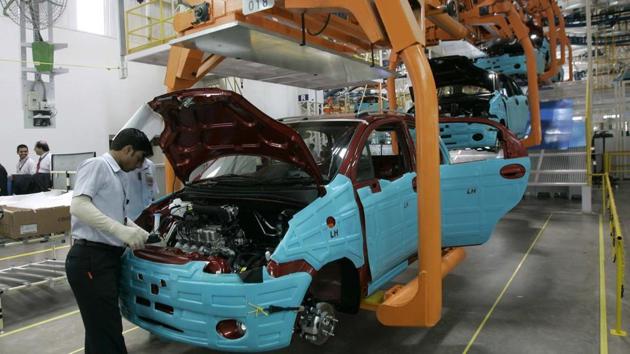Poor safety mechanism, work pressure maim thousands in auto sector: Report
In more than 6 out of 10 cases, the injuries resulted in permanent incapacitation, rendering workers incapable of equivalent employment and growth, pushing their families into poverty, said a report by Safe In India Foundation that highlights the poor safety record of the automotive industry’s supply chain in India.
Inadequate safety mechanisms and production pressure from supervisors are the leading causes of accidents in the automotive sector, shows a new report that recorded 1,369 accidents leading to loss of limb/s over three years, starting May 2016.

In more than 6 out of 10 cases, the injuries resulted in permanent incapacitation, rendering workers incapable of equivalent employment and growth, pushing their families into poverty, said a report by Safe In India Foundation that highlights the poor safety record of the automotive industry’s supply chain in India.
According to the report’s findings, these injuries can be prevented if companies install safety mechanisms in their machines, train workers to operate dangerous machines, provide safety gear and discontinue longs shift. The report further suggests practical and achievable solutions as a road map for the way forward.
To make the report, the Foundation, which was started by three alumni of the Indian Institute of Management-Ahmedabad, analysed data of 1,369 accident victims they helped between May 2016 and June 2019.
The automotive sector contributes to 4% of the GDP and employs at least 13 million people in India, which makes it imperative to set safety standards for the industry.
“Around 93% of injured workers were making components for three major companies in Gurgaon (Gurugram); we approached them. We believe that it’s a national issue and all other auto sector hubs, such as in Pune and Chennai, have a similar supply chain and the high use of power press and moulding machines lead to similar issues. They can benefit from our learnings and recommendations in Gurgaon (Gurugram),” co-founder and CEO if Safe in India Foundation Sandeep Sachdeva said.
Factory accidents are common, say doctors in trauma care.
“Machine-cut and -crushed limbs are common injuries among factory workers. We do get such cases and many require surgery to repair the damage,” said Dr Biplab Mishra, professor of surgery at the AIIMS Trauma Centre.
Besides analysing data, the report also gives a face to the accidents.
There’s Manmohan Bajpai, who lost his hand in a Manesar factory, and Sameer, who lost three fingers of his right hand when a machine came crashing down on him. Most of the victims are young, migrants contractual workers.
“Creating awareness among all stakeholders (auto-industry, government, buyers of four- and two-wheelers, manufacturers and users of power presses, investors, etc)... at a very high level, improve the safety culture in all industries. If auto-brands share our findings with their supply chain and push them to take ownership, there will be an immediate change in the behaviour of 20%-30% suppliers within six-12 months,” Sachdeva said.
A spokesperson for Maruti Suzuki India Limited, which, according to the report, has been the most proactive in taking action, said, “The company’s vision on Safety is ‘Zero Incident – Zero Human Injury and Zero Fire’... With every near-miss or incident occurrence, root-cause analysis is carried out and accordingly theme-based safety improvements are suggested.”
The report suggests that the government can become proactive to ensure safety by using Employee State Insurance Corporation (ESIC) accident data to inspect high-offending factories. But, the report warns this may reduce ESIC coverage to workers by such factories.
The laws and guidelines exist under Factory Law and National Guidelines for Responsible Business Conduct. “If the auto-Original Equipment Manufacturers (OEMs) and the government implement large commercial costs for poor factories, things will improve much faster and in more factories. I would say that 50%-70% of accidents will reduce. Addressing the last 10%-30% would be tough and there will always be some accidents, but by then we would have saved maybe lakhs of workers from such injuries across the country,” Sachdeva said.
“This is a subject where technical solutions can be implemented, over one to two years. Cultural change will take much longer. We believe that this is a long-term game and we will have to stay focussed on it for the next 5-10 years until the system changes for the better and sustainably,” he added.
Unsafe Workplace
• 83% machines had no/malfunctioning safety sensors
• 48% workers felt excessive production pressure from supervisors
• 52% accidents happen on only one type of machine – the power press
• 65% were below 30 years of age and a similar percentage were contract workers
• 47% lacked or had poor quality safety gear
Source: Safe In India Report 2019
(*Numbers don’t add up as some workers had multiple injuries)




